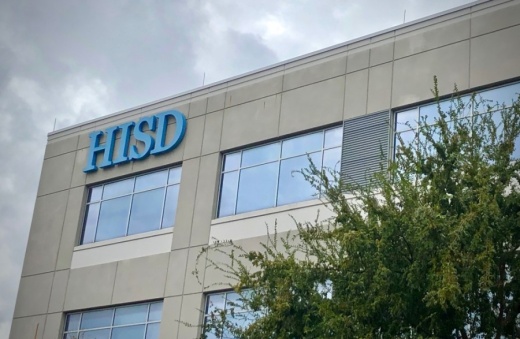In a statement released May 18, HISD officials said the district will no longer require students, staff and visitors to wear masks after June 4 in compliance with an executive order released by the office of Gov. Greg Abbott. Officials said they are awaiting further guidance from the Texas Education Agency.
Posted May 14
After the U.S. Centers for Disease Control and Prevention issued new guidance May 13 that ended all mask requirements for fully vaccinated people, HISD released a statement saying mask mandates would remain in place for the time being for facilities and campuses.
"Our Communicable Disease Plan committee meets regularly and will review the new guidance to make operational recommendations," according to the statement released late May 13. "The health and safety of all of our students and staff is paramount. HISD will continue to monitor conditions and update COVID-19 protocols as needed."
A handful of speakers, including some HISD students called into the public comment period of the district's May 13 regular meeting both in favor of and against the mask mandate. Students who called for an end to the mask mandate cited a variety of reasons, including discomfort wearing masks and the increased difficulty in communicating with peers and teachers.
Other school districts across the Greater Houston area have adjusted their mask policies in a variety of ways. Magnolia ISD lifted its mask mandate April 1, while Katy and Friendswood ISDs plan to lift theirs in June. Meanwhile, Fort Bend ISD has previously announced that masks will be required for the 2021-22 school year. Find a roundup of how other school districts are reacting here.
Spending $800 million
District officials also laid out plans at the May 13 meeting for how they would determine the best ways to spend more than $800 million in pandemic relief money from the federal government, a plan that will include a public feedback phase.
Community Impact Newspaper previously reported HISD is set to receive a little over $804 million in grant funding through the Elementary and Secondary School Emergency Relief III Grant, or ESSER grant. An initial allotment of $536 million is being made available through a grant process that is being overseen by the Texas Education Agency. The remaining funds will be released subject to ongoing conversations between the state and federal governments and could become available this summer.
The district began releasing surveys to parents, students and other stakeholder groups May 14. Separate surveys will be provided to families associated with certain student groups, such as special education students, that will be specifically tailored to their needs, said Glenn Reed, the district's chief financial officer. Surveys will also gather feedback on what people think mask protocols and cleaning procedures should be moving forward, he said.
In order to access the funds, the district must submit a grant application to the TEA, after which a negotiation process will take place, Reed said. During negotiations, the TEA will question the district on its plans and request data that supports what they are looking to do, he said.
Officials are aiming to submit a grant application by July 15, Reed said. Results of the survey will be presented at the district's June 3 board workshop, he said. By the June 10 meeting, he said he hopes to be able nail down the costs associated with specific parts of the plan.
The district is in the process of hiring a new superintendent, and interim Superintendent Genita Lathan—who announced her resignation earlier this year—said whoever is hired will be able to weigh in on the grant application before it is submitted. After the grant is submitted, the district will be required to review it at least every six months to see what revisions may need to be made, Reed said.
"As with any grant, we are able to make amendments to that grant ... and change what our plans are," he said.
Broad rules for how the funding is to be spent dictate that it must go toward helping students recover from learning losses caused by the coronavirus pandemic and helping the district with its pandemic response. The funding is meant to be used throughout the 2023-24 school year.
"We have to spend a minimum of 20% of those funds on learning loss," Reed said. "It's got to be evidence-based items like intervention, summer learning, extended-day after-school programs or extended-year programs."
District officials said they have seen a discrepancy between students who are testing from home and those who are testing from an HISD campus. Additionally, the district will consider how funds could be used to help students with unique circumstances, including homeless students, students in foster care, English language learners and migrant students.
Other areas of the plan can include providing mental health services, bolstering professional development, extended instructional time, staff retention, class size reductions and needs related to facilities and technology, such as purchasing devices, upgrading infrastructure, cleaning and ventilating.
Trustee Anne Sung, who represents parts of the Heights, River Oaks and Montrose areas, said she was glad to see public feedback being centered in the discussions of how to spend the grant money.
"I think this is in an incredible opportunity ... to engage with families who we may not often engage with in HISD," she said. "We have almost $1 billion here, and we want your input on how to help your kids."
A survey to provide feedback on how the grant money should be spent can be found here. The survey will close May 21.





